Come join us now, and enjoy playing your beloved music and browse through great scores of every level and styles!
Can’t find the songbook you’re looking for? Please, email us at: sheetmusiclibrarypdf@gmail.com We’d like to help you!
Table of Contents
Nino Rota – The Godfather Waltz (Piano Solo) sheet music, Noten, partitura, spartiti, 楽譜, 乐谱
Please, subscribe to our Library.
If you are already a subscriber, please, check our NEW SCORES’ page every month for new sheet music. THANK YOU!
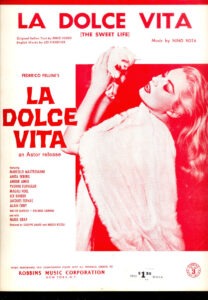
Best Sheet Music download from our Library.
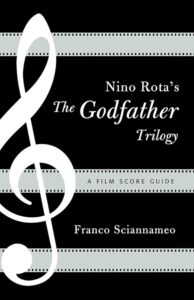
Browse in the Library:
Or browse in the categories menus & download the Library Catalog PDF:
The Maestro of Melody: the Life and Music of Nino Rota.
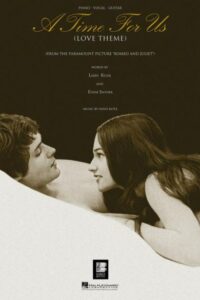
Nino Rota is a paradox in the history of 20th-century music. He was a child prodigy who composed an oratorio at age eleven and a conservatory-trained academic who rubbed shoulders with the classical avant-garde, yet he is beloved by millions for some of the most hummable, emotionally direct film scores ever written. He was Federico Fellini’s musical other half, the sonic architect of the Corleone family’s tragedy, and a composer whose work effortlessly bridged the gap between the concert hall and the cinema. To understand Nino Rota is to understand how profound artistry can flourish within apparent simplicity, and how a single melodic line can encapsulate a world of feeling.
Biography: The Prodigy and the Professional
Early Life and Formative Years (1911-1929)
Nino Rota was born Giovanni Rota Rinaldi on December 3, 1911, in Milan, into a family of musicians. His maternal grandfather, Giovanni Rinaldi, was a respected pianist and composer. The musical environment was intense and nurturing; Rota was a natural. Demonstrating an extraordinary precocity, he began composing at the age of eight. By the time he was eleven, he had written an oratorio, L’infanzia di San Giovanni Battista (The Childhood of St. John the Baptist), which was performed to acclaim. This early work led to him being labeled a wunderkind in the Italian press.
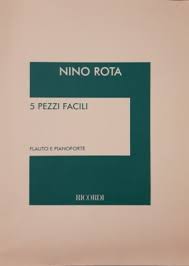
His formal training was as rigorous as it was prestigious. In 1923, he entered the prestigious Milan Conservatory (Giuseppe Verdi Conservatory), where he studied under luminaries like Giacomo Orefice and Ildebrando Pizzetti. His talent was so evident that the renowned composer and teacher Alfredo Casella took him under his wing. It was Casella who helped foster Rota’s connections to the broader European musical scene.
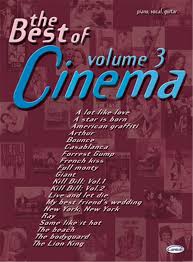
Academic Pursuits and American Interlude (1930-1939)
After graduating from the Milan Conservatory, Rota moved to Rome in 1930 to study literature at the university. More importantly, he began attending the Accademia di Santa Cecilia, where he studied composition with Respighi, a master of orchestral color. In 1931, following Casella’s encouragement, Rota applied for and won a scholarship to the Curtis Institute of Music in Philadelphia. This American sojourn (1931-1932) was pivotal. At Curtis, he studied composition with Rosario Scalero (who also taught Samuel Barber) and conducting with Fritz Reiner. He absorbed the American musical idiom, from Gershwin’s jazz to Hollywood’s burgeoning film music, influences that would subtly permeate his later work.
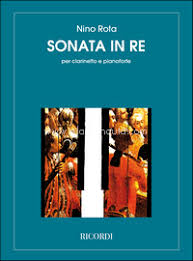
Returning to Italy, he completed a thesis on the Renaissance composer Gioseffo Zarlino at the University of Milan, graduating in 1937. This academic rigor, focused on early music, would profoundly influence his harmonic language, giving it a modal, timeless quality distinct from his contemporaries.
The War Years and the Meeting with Fellini (1940-1959)
Rota began teaching at the Liceo Musicale in Bari in 1939, a position he would hold for decades, eventually becoming its director. It was during this period that his film career began in earnest. He had already dabbled in cinema, scoring his first film in 1933 (Treno popolare), but it was his collaboration with director Renato Castellani in the 1940s that established his reputation.
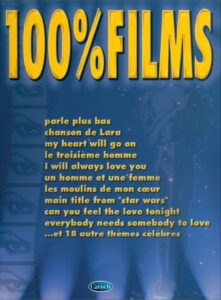
The defining partnership of his life began in 1952 with Lo Sceicco Bianco (The White Sheik), the first feature film directed by a young Federico Fellini. This meeting of minds was nothing short of alchemical. Rota’s music became the invisible narrator and emotional heartbeat of Fellini’s universe—a world of dreams, memories, clowns, and the sublime grotesque. Over the next quarter-century, Rota would score every single one of Fellini’s feature films except one (Il Bidone), creating a body of work that is inseparable from the director’s visual poetry.
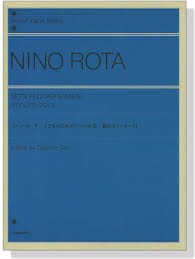
International Acclaim and Later Years (1960-1979)
While Rota was a star in Italy, international superstardom arrived with Francis Ford Coppola’s The Godfather (1972). His score, particularly the “Love Theme,” became a global phenomenon, winning him an Academy Award—though it was controversially rescinded when it was discovered the main theme was previously used in Rota’s score for Fortunella (1958). Undeterred, he returned to win a legitimate Oscar for The Godfather Part II (1974).
Alongside his film work, Rota never ceased composing concert music: operas, ballets, symphonies, and chamber works. He remained dedicated to his teaching in Bari until his final years. Nino Rota died in Rome on April 10, 1979, from a coronary thrombosis, leaving behind a legacy of unparalleled melodic richness.
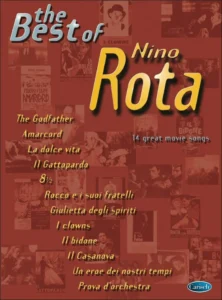
Music Style: The Anatomy of a Rota Melody
Nino Rota’s style is a unique fusion of seemingly disparate elements. He synthesized his deep knowledge of the Italian operatic tradition, the contrapuntal techniques of the Renaissance and Baroque, the harmonies of the late Romantics, and the rhythmic vitality of American jazz and popular music.
1. Unforgettable Melody: Above all else, Rota was a melodist. His themes are instantly recognizable, often simple in their construction but profound in their emotional impact. They possess a singable, folk-like quality, as if they have always existed. Think of the bittersweet nostalgia of “Juliet of the Spirits,” the playful circus march of “8 ½,” or the tragic grandeur of “The Godfather Waltz.” These are not complex, developmental themes in the Germanic tradition; they are self-contained, potent musical statements.

2. Harmonic Language: Nostalgia and Wit: Rota’s harmony is rarely aggressively dissonant. Instead, he achieves color and emotion through clever means:
- Modal Mixtures: He frequently borrowed chords from the parallel minor or major key (e.g., using a bright E major chord in a C minor context in the Godfather theme), creating a sense of poignant ambiguity.
- Chromaticism: He used chromatic passing notes and chords not for atonality, but to add a layer of sophistication and wistfulness, a technique reminiscent of Puccini.
- Neo-Classical Transparency: Influenced by Stravinsky and Casella, Rota often employed clear, transparent textures. His orchestration is never muddy; each line, whether for trumpet, accordion, or strings, is clearly delineated.
3. Rhythm and Orchestration: Rota had a fantastic sense of rhythm. He drew heavily from Italian folk dances like the tarantella and saltarello, as well as from jazz and march music. His orchestration is masterful and deeply cinematic. He had a particular fondness for unusual solo instruments that could evoke a specific mood: the circus-like calliope and organ grinder for Fellini’s surrealism, the mournful trumpet for The Godfather, the haunting wordless soprano for Juliet of the Spirits.
Improvisational Licks and Chord Progressions
While “licks” is a term more common to jazz, Rota’s music is filled with recurring melodic and harmonic gestures that function similarly.
- The “Fellini” Lick: A classic Rota-ism is a melody that dances around a central note with simple, stepwise motion, often accompanied by a oom-pah bass line, evoking a slightly melancholic carnival. The main theme from I Vitelloni or La Strada are perfect examples.
- The “Tragic Waltz” Progression: In The Godfather, Rota makes masterful use of the minor key waltz. A common harmonic foundation here is the oscillation between the i chord and the V chord (e.g., Am and E or Em), but Rota elevates it by using rich, extended harmonies. The main theme’s progression is deceptively simple but is rendered epic by its orchestration and tempo. He often uses a descending bass line, a classic Baroque lament bass trope, to underscore tragedy.
- Major/Minor Shifts: A quintessential Rota technique is the immediate shift from a bright major key to its parallel minor, or vice-versa. This creates an instant emotional pivot, capturing both the joy and the sadness of a moment simultaneously—a perfect metaphor for Fellini’s world. The “Love Theme” from The Godfather expertly uses this, its hopeful A major melody suddenly shadowed by a shift to the darker A minor harmony.
- Use of Pedal Points: Rota frequently sustained a single bass note (a pedal point) under changing harmonies, creating tension and a sense of anticipation. This is used to brilliant effect in the buildup to the “Tarantella” in The Godfather Part II.
Cooperation with Other Artists
Federico Fellini: This was a symbiotic relationship of the highest order. Fellini often said he didn’t know what a film was about until he heard Rota’s music for it. Rota would sometimes provide themes during the scripting stage, and Fellini would play them on set to create the right atmosphere for the actors. Their collaboration was based on a shared language of memory, dream, and the circus. Rota wasn’t just providing accompaniment; he was providing the film’s soul.
Francis Ford Coppola: Coppola, a great admirer of Fellini, sought out Rota specifically to give The Godfather an “Italianate” feeling, distinct from typical Hollywood scores. Rota delivered a score that was operatic in scope, weaving Sicilian folk elements with a tragic, waltzing main theme that defined the Corleone saga.
Luchino Visconti: For the aristocratic and theatrical Visconti, Rota composed scores of neo-romantic grandeur. Their collaborations on Rocco and His Brothers (1960) and The Leopard (1963) required a more formal, sweeping, and dramatically intense approach, which Rota provided with ease, proving his versatility beyond the Fellinian universe.
Other notable collaborations include those with King Vidor (War and Peace, 1956), Franco Zeffirelli (Romeo and Juliet, 1968—for which he received an Oscar nomination), and René Clément (This Angry Age).
Influences and Legacy
Influences: Rota’s influences were vast. From the classical canon, he revered Mozart above all, whose clarity and melodic genius are reflected in Rota’s own work. He was deeply influenced by the orchestral colors of Stravinsky and Respighi, the lyricism of Puccini and Verdi, and the formal structures of the Baroque and Renaissance masters he studied.
Legacy: Nino Rota’s legacy is immense and multifaceted.
- In Film Music: He liberated film scoring from mere illustration. He proved that a score could be both popular and profound, melodic and complex. Composers like John Williams (whose scores for Star Wars and Harry Potter owe a clear debt to Rota’s thematic, leitmotif-driven approach), Ennio Morricone, and Michael Giacchino all stand on his shoulders.
- In Concert Music: While overshadowed by his film work, his concert pieces are increasingly being performed and recorded, recognized for their craftsmanship, wit, and emotional depth.
- In Popular Culture: Themes from The Godfather and Romeo and Juliet are part of the global cultural fabric. He demonstrated that a film melody could achieve the timeless status of a folk song or an opera aria.
Major Works and Filmography
Selected Concert Works:
- Operas: Il Cappello di Paglia di Firenze (The Florentine Straw Hat), La visita meravigliosa, Napoli milionaria!.
- Ballets: La Strada (based on his film score), Le Molière imaginaire, Amor di poeta.
- Orchestral: 3 Symphonies, Bassoon Concerto, Trombone Concerto, Concerto per archhi.
- Chamber Music: String Trio, Sonatas for various instruments, a large body of piano works.
Selected Filmography (a mere fraction of his 150+ scores):
- With Federico Fellini:
- I Vitelloni (1953)
- La Strada (1954) – Oscar for Best Original Score (in the now-defunct “Scoring of a Dramatic or Comedy Picture” category)
- Nights of Cabiria (1957) – Oscar for Best Original Score
- La Dolce Vita (1960)
- 8 ½ (1963)
- Juliet of the Spirits (1965)
- Fellini’s Satyricon (1969)
- Roma (1972)
- Amarcord (1973) – Oscar nomination
- Fellini’s Casanova (1976)
- With Luchino Visconti:
- Rocco and His Brothers (1960)
- The Leopard (1963)
- The Damned (1969)
- With Francis Ford Coppola:
- The Godfather (1972) – Oscar revoked, then nominated for the “Love Theme”
- The Godfather Part II (1974) – Oscar winner for Best Original Score
- Other Landmarks:
- War and Peace (King Vidor, 1956)
- Romeo and Juliet (Franco Zeffirelli, 1968) – Oscar nomination
- Waterloo (Sergei Bondarchuk, 1970)
- Death on the Nile (John Guillermin, 1978)
Discography and Most Known Compositions
A complete discography is vast, but essential recordings include:
- Film Music Compilations: Look for collections performed by the Rome Symphony Orchestra or dedicated compilations on labels like Deutsche Grammophon or EMI.
- The Fellini Albums: Many conductors, like Carlo Savina (a close collaborator), have recorded definitive suites of the Fellini scores.
- Concert Works: His symphonies and concertos have been recorded by labels like Naxos and Chandos, bringing his non-film work to a wider audience.
Most Known Compositions:
- “The Godfather Waltz” (Main Title) – The iconic, tragic theme for the Corleone family.
- “Love Theme from The Godfather” (Speak Softly Love) – A global standard, synonymous with romantic tragedy.
- “La Dolce Vita” Main Theme – Capturing the glamour and emptiness of Rome’s high society.
- “8 ½” Main Theme – A playful, chaotic, and brilliant march that embodies creative block and artistic chaos.
- “A Time for Us” (from Romeo and Juliet) – Another hugely popular love theme.
- “Gelsomina’s Theme” (from La Strada) – A simple, heartbreaking melody for solo trumpet representing the innocence of Giulietta Masina’s character.
- “Amarcord” Main Theme – A wistful, nostalgic waltz for childhood memories.
Nino Rota was a composer who dissolved the artificial boundaries between “high” and “low” art. He brought the rigor of the conservatory to the recording stage and the infectious joy of the piazza to the concert hall. His work is a testament to the enduring power of melody—a power that can make us laugh with a clown, weep for a tragic anti-hero, and yearn for a half-remembered past. He was not just a film composer; he was a storyteller whose language was music, and his stories, in all their sublime simplicity and profound depth, continue to resonate across the world.
Browse in the Library:
Or browse in the categories menus & download the Library Catalog PDF:
